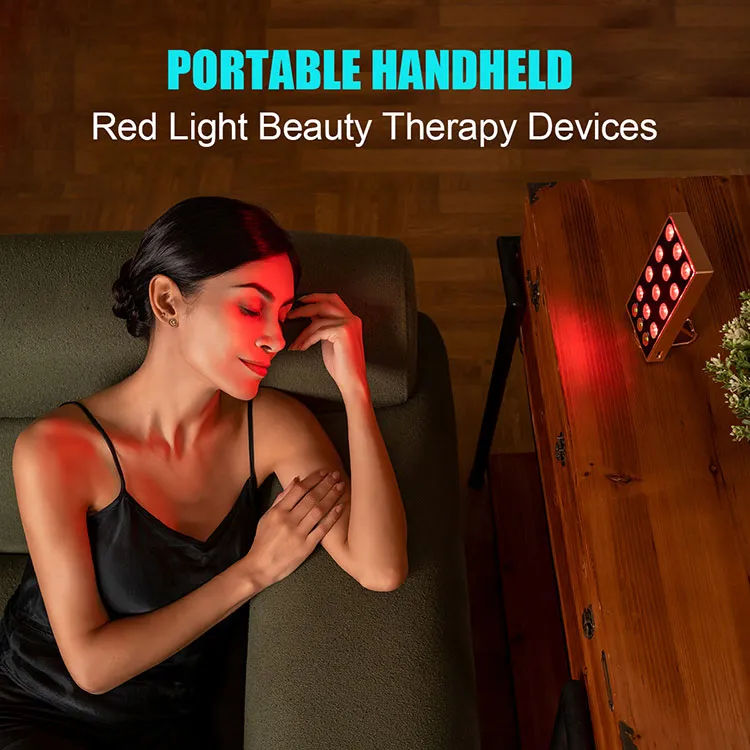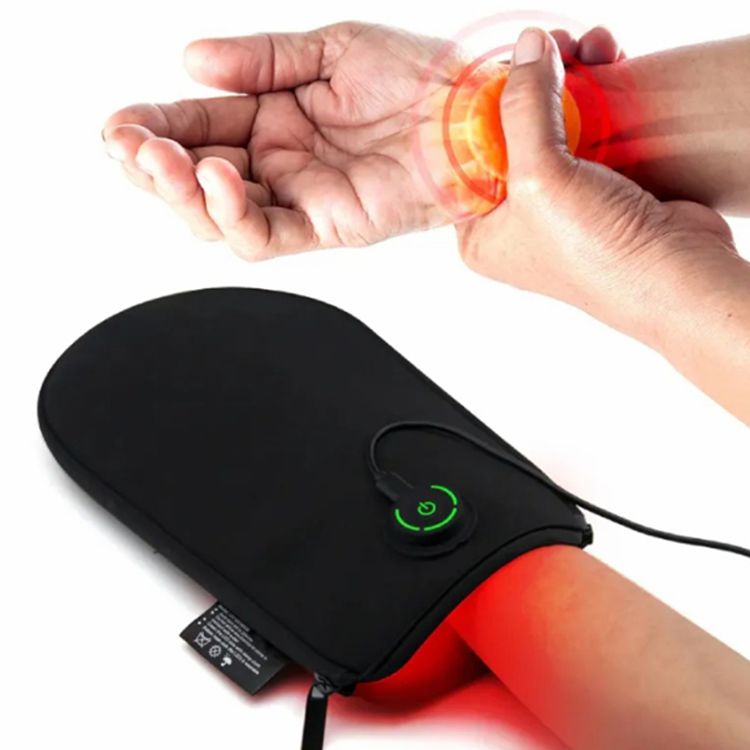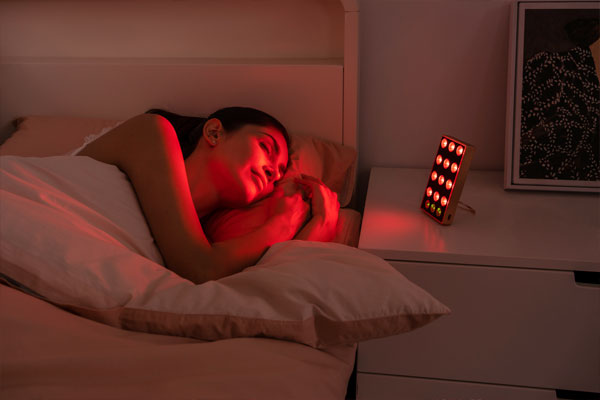Frequently Asked Questions (FAQ) - LED Red Light and NIR Light Therapy
1. How does red light therapy work?
Red and near-infrared light therapy works by increasing mitochondrial energy production in cells. Mitochondria are the powerhouses of cells, producing energy in the form of ATP (adenosine triphosphate). The specific photons in red and near-infrared light interact with a cellular photoreceptor called cytochrome c oxidase. This interaction enhances mitochondrial efficiency, increasing ATP production and improving cellular function. Enhanced cellular energy leads to better performance and health throughout the body.
2. What is the difference between the Red light and Near Infrared light?
The red light is absorbed primarily by the skin and hair, providing superficial benefits like improved skin health and a youthful appearance. In contrast, the near-infrared spectrum penetrates deeper into the subcutaneous tissue, reaching organs, joints, muscles, tendons, ligaments, and even the brain. This deeper penetration allows NIR to enhance cellular energy production, support tissue repair, and improve overall function of the targeted areas.
3. Should the red and near infrared light be used together or separately?
Both types of light are often used together because they work synergistically to enhance overall benefits. However, they can also be used separately depending on the desired outcome. For evening therapy sessions, using the near infrared light alone is preferable as it lacks the stimulating effect of the visible red light, making it more suitable for night-time use.
4. Do I need to use eye protection?
Yes, eye protection is recommended, especially when facing the light directly. BlockBlueLight's devices are very bright, and the provided safety goggles should be worn to protect your eyes from the intense light. While modest amounts of red and NIR LED light may benefit certain eye conditions, it is important not to stare directly into the LEDs.
5. Why do half of the LEDs appear to be not working?
LEDs emitting near-infrared light appear off because this light is invisible to the human eye. Although you may not see the light, the LEDs are functioning and delivering therapeutic energy as designed. Near-infrared light (800-900nm) is just beyond the visible spectrum (400-700nm), so you might see a faint pinkish hue or a small pink dot, indicating that the LEDs are working properly and providing effective treatment.
6. Can Children use red light therapy?
Yes, children can use red light therapy as they have the same mitochondrial function as adults. However, it is recommended to use shorter sessions and maintain a greater distance from the light source. Typically, sessions should last 5 to 15 minutes from a distance of 25 to 50 cm. As with any new treatment, consult a healthcare provider before starting therapy for children and ensure adult supervision during use.
7. Can pregnant or nursing women use red light therapy?
Consult a healthcare provider before using red light therapy during pregnancy or while nursing, as there is limited clinical research in these areas. Dr. Michael Hamblin, a leading scientist in light therapy, suggests potential benefits for both mother and baby due to the presence of stem cells, but professional medical advice is essential.
8. What is the difference between red light therapy and infrared saunas?
Infrared saunas emit a different spectrum of wavelengths primarily focused on generating heat. They use mid and far-infrared wavelengths (IR-B and IR-C), which primarily heat the skin's surface and the top layer of the skin. In contrast, red light therapy devices emit red and near-infrared wavelengths (IR-A) with high concentration, which penetrate deeper into the subcutaneous tissue and enhance mitochondrial function. This results in improved energy production within cells, promoting overall vitality without significant heat generation.
9. How does red light therapy compare to spending time in the sun?
While natural sunlight offers benefits, it's not always practical to spend sufficient time in the sun, especially with clothing limitations and unpredictable weather. Red light therapy provides a concentrated form of beneficial wavelengths that can be easily integrated into your daily routine at home. It delivers consistent and targeted light exposure, ensuring therapeutic benefits without the variability of sunlight. Additionally, red light therapy can be used regardless of weather conditions or seasonal changes, offering a reliable and convenient alternative to sun exposure.
10. What time of day is best for using red light therapy?
Red light therapy can be utilized at any time during the day. Many users find morning sessions beneficial as it can help energize and prepare them for the day. Additionally, red light therapy can be used before or after workouts to enhance performance and aid in recovery. The flexibility of red light therapy allows you to incorporate it into your routine at a time that best suits your schedule and needs.
11. Is red light therapy beneficial during the summer?
Yes, red light therapy is beneficial year-round, including during the summer. While summer provides natural sunlight, red light therapy offers controlled exposure to beneficial wavelengths without the risks associated with UV radiation. It can also prepare the skin for UV exposure, making it more resistant to sunburn. Furthermore, red light therapy aids in muscle recovery, joint health, and overall performance, which is valuable for maintaining fitness and health during the summer months.
12. What is the optimal distance from the light, and how long should one red light therapy session be?
For effective red light therapy, position yourself 15 to 50 cm away from the light source. The duration of each session should be between 10 to 20 minutes. The closer the light source is to your body, the more intense the irradiation power, which can shorten the required treatment time. Conversely, increasing the distance will reduce the irradiation power but cover a larger area, necessitating longer sessions. Adjust the distance based on the area being treated and your individual response to the therapy.
13. Can I overdose on red light therapy?
Yes, it is possible to overdose on light. Red light therapy follows a biphasic dose-response, where too little light has minimal effect, the optimal dose provides maximum benefits, and excessive light diminishes the positive effects. To avoid overdosing, adhere to the recommended guidelines: position yourself 15 to 50 cm from the light for 10 to 20 minutes per area. Monitor your individual response and adjust the distance or session duration as needed. Everyone's sensitivity to light varies, so it's important to find the balance that works best for you.
Red Light Therapy has been the subject of numerous scientific studies, with over 10,000 studies supporting its efficacy. Research has shown that red light therapy can significantly improve cellular metabolism, reduce inflammation, and enhance tissue repair.
The photochemical reaction triggered by red light therapy is similar to photosynthesis in plants, where light energy is converted into chemical energy, promoting cellular health and function.
Red light therapy works by delivering red 620-660nm) and near-infrared (810-850nm) light through the skin, which is absorbed by the mitochondria in cells. Mitochondria, known as the powerhouses of cells, produce Adenosine Triphosphate (ATP), the energy currency of cells.
When red light is absorbed, it enhances mitochondrial function, leading to increased ATP production. This boost in cellular energy enhances cellular repair, regeneration, and overall function.



 Whatsapp
Whatsapp





